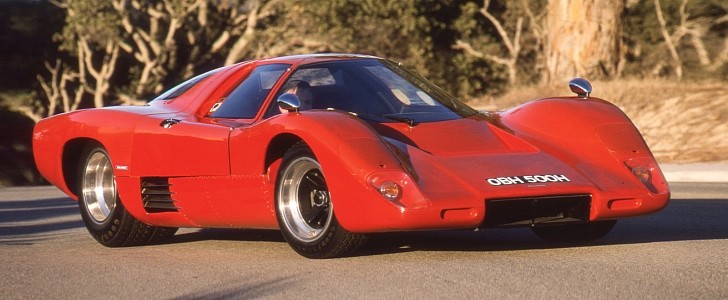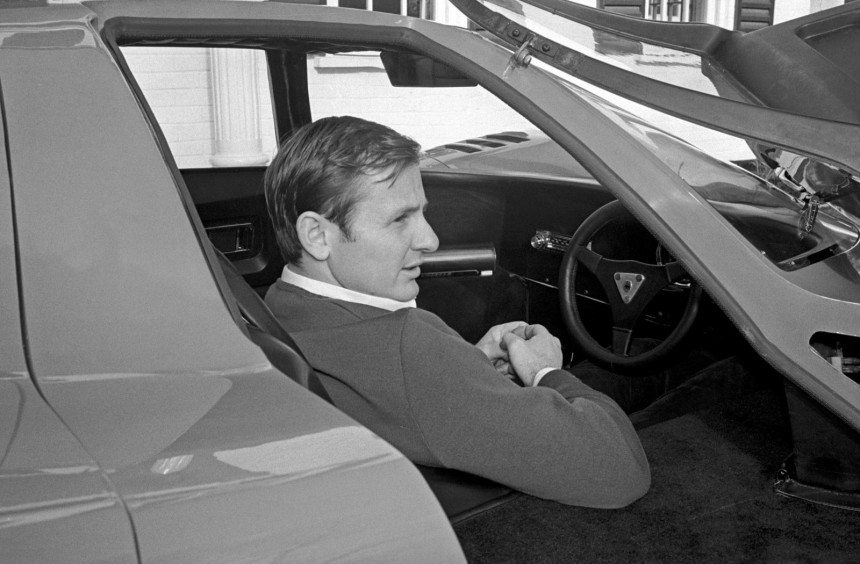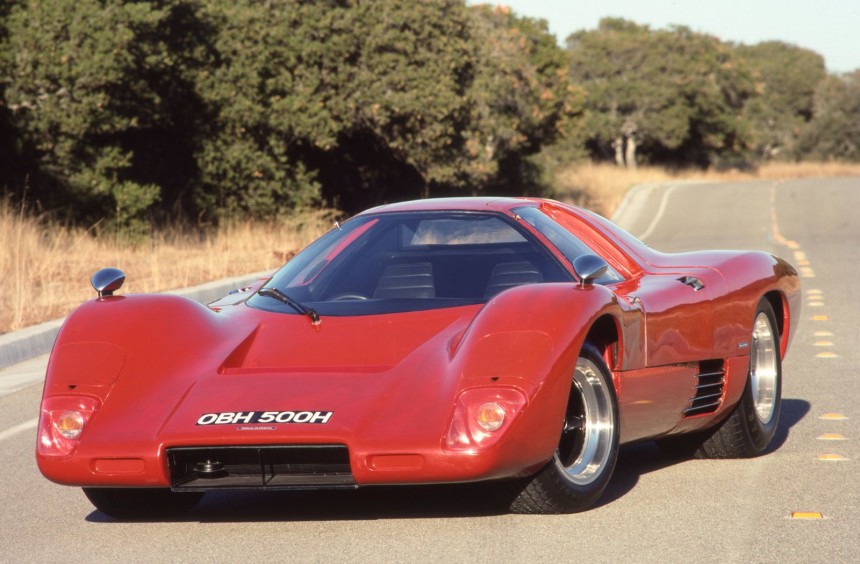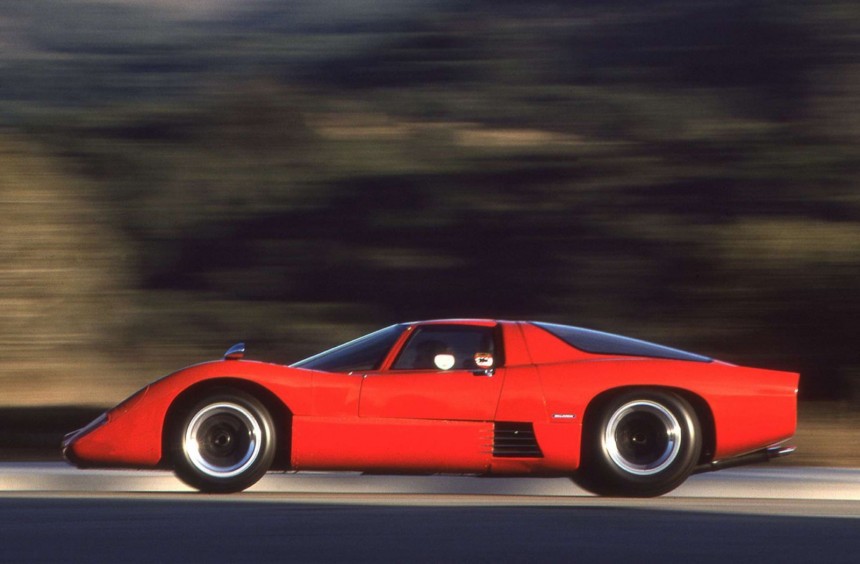Many enthusiasts think that the story of all roadworthy McLarens starts with the mighty F1. However, more than two decades before Gordon Murray’s masterpiece entered production, another mid-engine, race-bred beast took to the streets, and it was actually Bruce McLaren’s daily driver.
Unlike Enzo Ferrari, who only wanted to race and reluctantly started developing road cars to keep his Scuderia alive, one of Bruce McLaren’s biggest ambitions was building an epic, road-legal machine that would bear his name.
Born in New Zeeland on 30 August 1937, McLaren started racing when he was 14-years old, using an Austin 7 Ulster that he restored alongside his father, Les. In the years that followed, he became one of the most promising young drivers in the world, and by the age of 22, he was not only driving in Formula 1 but had become the youngest Grand Prix winner in the history of the competition.
For reasons independent of his talent, McLaren never reached his true potential as a driver, but his legacy lives on thanks to the racing team he established in 1963. Apart from driving, the New Zealander was also passionate about engineering, design, and innovation, so he contributed to the development of his team’s race cars.
One of these was the M6A, an open-top prototype conceived for the 1967 Can-Am season. Finished in a bright orange livery, it dominated the competition and worked wonders for McLaren’s popularity.
Fueled by the Cam-Am success, the team decided to take their talents to an international stage by entering a closed-cockpit version of the orange race car in the World Championship of Makes (WCM) a year later. But, in order to homologate the M6A for the competition, they had to abide by the newly introduced rules, which required manufacturers to produce a minimum of 50 road-legal versions.
Along with British manufacturer Trojan-Lambretta, McLaren had already planned to deliver 250 M6A chassis to privateers in the following years, but none of them were set to feature engines since the company didn’t have the necessary funds to purchase so many. Even acquiring 50 proved impossible, so they were eventually forced to abandon the WCM campaign. However, three closed-cockpit chassis were eventually built, and one would be converted into a roadworthy monster, turning Bruce McLaren’s dream into reality.
Built around the M6A’s innovative aluminum monocoque, the car dubbed M6GT had little in common with the vehicles that donned license plates during that era. It was fitted with a wild fiberglass body that featured butterfly-opening doors and manually operated pop-up headlights. The cockpit came with two leather-upholstered seats, but two individuals would have had a hard time enjoying any form of comfort if they climbed into the GT at the same time.
This amazing piece of engineering was powered by the same Bartz-tuned Chevrolet small-block V8. The engine was heavily detuned but could still make around 370 hp, as well as 370 lb-ft (501 Nm) of torque. Linked to a five-speed ZF manual gearbox, it helped the 1,764-pound (800 kg) McLaren sprint from 0 to 60 mph (97 kph) in a little over 4 seconds and reach a top speed of 180 mph (290 kph).
Completed in early-1970, the M6GT was painted red and handed down to the company’s founder, who drove it daily until his untimely passing several months later. With only 1,900 miles (3,058 km) on the odometer, the car was sold years later, but thankfully it was kept in its original state to this day. After exchanging hands multiple times, it now resides in Chicago, Illinois, as part of a private collection.
After Bruce’s tragic death, any plans for a production run were scrapped. In total, three M6GTs were built between 1969 and 1970. Apart from the aforementioned car, another one was delivered to Ted Peterson in California, and the third was a race-spec variant that was entered in various competitions by British racing driver David Prophet.
Bruce McLaren’s dream of a production car that would bear his name became a reality more than twenty years later when the F1 was introduced.
Today, the name McLaren is not only synonymous with one of the most successful racing teams in motorsport but also with some of the most amazing supercars in the world, and all of them trace their roots back to the extraordinary M16GT.
You can see the car in action at Spa in the video below posted on YouTube by Retroschaft.
Born in New Zeeland on 30 August 1937, McLaren started racing when he was 14-years old, using an Austin 7 Ulster that he restored alongside his father, Les. In the years that followed, he became one of the most promising young drivers in the world, and by the age of 22, he was not only driving in Formula 1 but had become the youngest Grand Prix winner in the history of the competition.
For reasons independent of his talent, McLaren never reached his true potential as a driver, but his legacy lives on thanks to the racing team he established in 1963. Apart from driving, the New Zealander was also passionate about engineering, design, and innovation, so he contributed to the development of his team’s race cars.
Fueled by the Cam-Am success, the team decided to take their talents to an international stage by entering a closed-cockpit version of the orange race car in the World Championship of Makes (WCM) a year later. But, in order to homologate the M6A for the competition, they had to abide by the newly introduced rules, which required manufacturers to produce a minimum of 50 road-legal versions.
Along with British manufacturer Trojan-Lambretta, McLaren had already planned to deliver 250 M6A chassis to privateers in the following years, but none of them were set to feature engines since the company didn’t have the necessary funds to purchase so many. Even acquiring 50 proved impossible, so they were eventually forced to abandon the WCM campaign. However, three closed-cockpit chassis were eventually built, and one would be converted into a roadworthy monster, turning Bruce McLaren’s dream into reality.
This amazing piece of engineering was powered by the same Bartz-tuned Chevrolet small-block V8. The engine was heavily detuned but could still make around 370 hp, as well as 370 lb-ft (501 Nm) of torque. Linked to a five-speed ZF manual gearbox, it helped the 1,764-pound (800 kg) McLaren sprint from 0 to 60 mph (97 kph) in a little over 4 seconds and reach a top speed of 180 mph (290 kph).
Completed in early-1970, the M6GT was painted red and handed down to the company’s founder, who drove it daily until his untimely passing several months later. With only 1,900 miles (3,058 km) on the odometer, the car was sold years later, but thankfully it was kept in its original state to this day. After exchanging hands multiple times, it now resides in Chicago, Illinois, as part of a private collection.
Bruce McLaren’s dream of a production car that would bear his name became a reality more than twenty years later when the F1 was introduced.
Today, the name McLaren is not only synonymous with one of the most successful racing teams in motorsport but also with some of the most amazing supercars in the world, and all of them trace their roots back to the extraordinary M16GT.
You can see the car in action at Spa in the video below posted on YouTube by Retroschaft.














